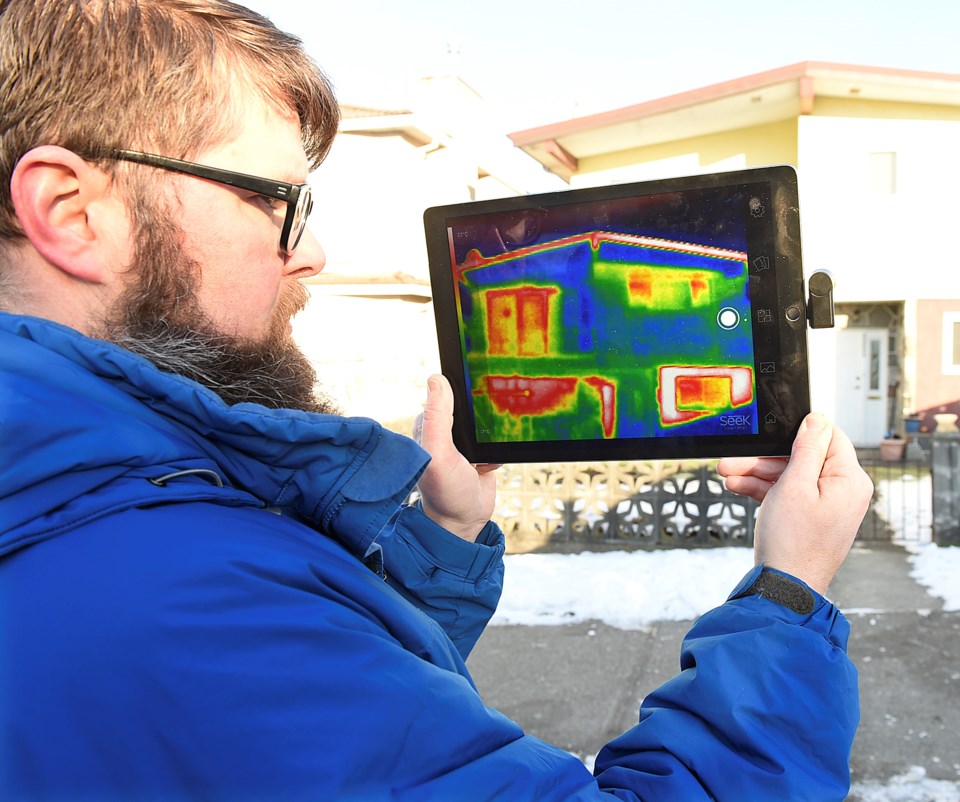The City of Vancouver is currently undertaking what might seem to many observers as two contradictory programs. One is the Character Home Zoning Review; the other is the Thermal Imaging Program.
The purpose of the Character Home Zoning Review is to look at options to encourage retention of heritage and character homes in single-family (RS) zoning districts. It was initiated in response to community concerns about the many demolitions of high-quality older homes, mostly built before 1940, and the size and scale of the new homes being built in established single family neighbourhoods.
The Thermal Imaging Pilot Program was launched in January to help homeowners identify energy loss in single-family homes and to share information on energy saving incentives that are available.
In Vancouver, 55 per cent of all greenhouse gas (GHG) emissions come from buildings, and detached homes account for 31 per cent of these emissions.
The city has identified five neighbourhoods to participate in the pilot, including Dunbar-Southlands, Riley Park, Strathcona, Victoria-Fraserview and Hastings-Sunrise. Thermal images of the fronts of houses in these neighbourhoods will be taken using a special camera mounted on a car driving along the streets.
A thermal image is a picture of the heat that comes off an object. When something is hot, the image is bright yellow; if cold, it shows up as dark blue, with varying degrees of colour in between.
The images will be taken throughout the month of January and staff will follow-up with homeowners later this spring.
It should be noted that these pictures only show the fronts of houses. To get a more detailed assessment, it will be necessary to hire a private contractor who will often pressurize a house to see where leaks occur. I am told the cost for this starts at about $600, but it can be well worth the money.
So why will many think these programs are contradictory?
Anyone who has lived in a pre-1940 character home can tell you. As a rule, the walls have little or no insulation and they leak air like a sieve. Even when renovated, it is often difficult to make older homes as energy efficient as new homes, without a loss of exterior or interior character.
For these reasons, it is not surprising that both programs are promoting Heritage Energy Retrofit Grants, being offered by the Vancouver Heritage Foundation in partnership with the City of Vancouver.
The Heritage Energy Retrofit Grant program covers heating, fuel-switching, insulation and air sealing, and has recently been expanded to include wood storm windows and water conservation measures.
Grants are available for owners of homes built before 1940, as well as homes listed on the Vancouver Heritage Register.
However, they are not likely to cover all the cost of renovations. A maximum of $3,000 is available per home towards qualifying retrofits; or a maximum of $6,000 per home if fuel is switching from gas (or oil) to an electric air source heat pump, including other retrofits.
The Home Energy Retrofit Grant program is open from September 2016 to Aug. 31, 2018 or until all grant funds are allocated — whichever occurs sooner. Applicants are encouraged to apply early and hire an Energy Advisor to conduct a pre-retrofit evaluation.
In addition to this program, Fortis and B.C. Hydro are also offering grants to offset energy retrofits costs. They apply to both new and older buildings.
A detailed schedule can be found online. Grants can be used to offset the costs of insulating attics, which often offers the greatest payback, and improving wall insulation, heating systems, hot water, windows and ventilation.
As I wrote in an earlier column, I am very much in favour of trying to preserve Vancouver’s character homes. However, my initial review of the Character Home Zoning Review caused concerns.
The city had not determined many important program details, and while offering some carrots, it was also wielding a big stick by reducing the permitted size of any new houses replacing pre-1940s homes.
I will soon be meeting with the city to discuss how it might make this program more equitable and effective. But in the meanwhile, if you have an older home that you want to conserve, apply for some of the grants before all the money is gone.
@michaelgeller



